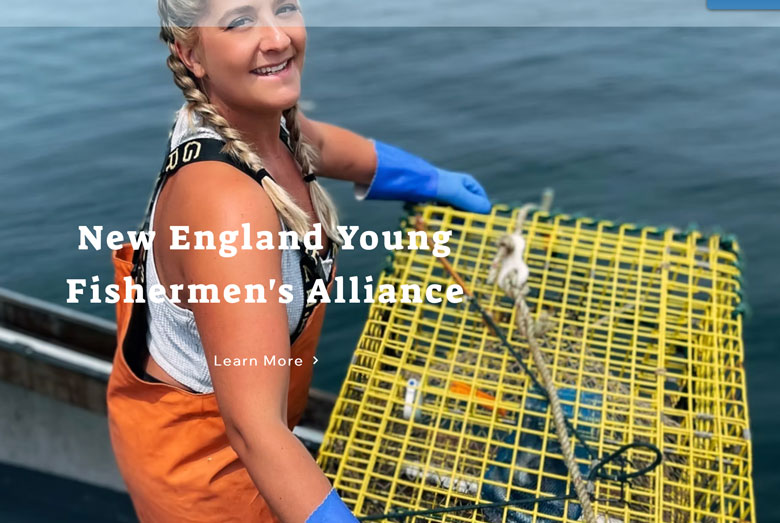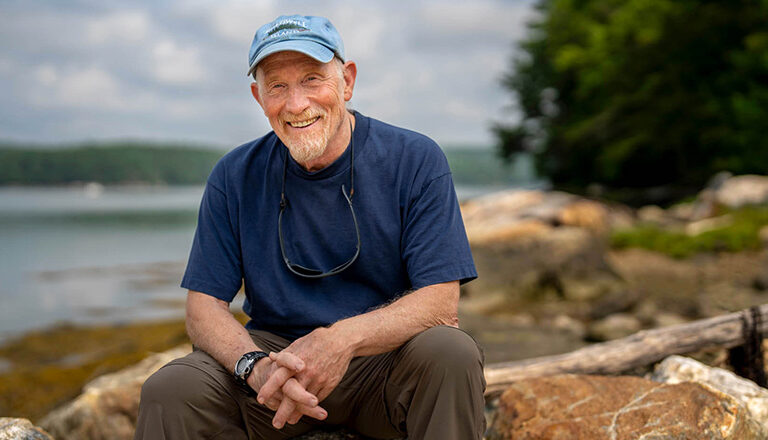The making-of-a-fisherman myth we often subscribe to has him growing up on a boat, eventually making captain, and then inherently knowing how to succeed as he takes the helm. In this scenario, the fishing fleet is continuously reinvigorated by the children of fishermen.
In reality, the New England fishing fleet is rapidly graying. For example, the average age of groundfishermen is 55 years old, according to a recent National Oceanic and Atmospheric Administration (NOAA) report.
Regional fishery advocates formed The New England Young Fishermen’s Alliance in 2022 to help the next generation of fishermen and fisherwomen to obtain their own boats and succeed in the industry. Each year, the Alliance offers its “Deckhand to Captain” program, a nine-month-long, free training program that provides aspiring New England captains with the business skills and mentorship to succeed in the region’s fishing industry.
The classes are held Monday nights each week in Portsmouth, N.H. The program has recruited trainees mainly from New Hampshire, Massachusetts, and Rhode Island. This year, the organization also received a special grant for outreach in Southern Maine from The Builders Alliance, a foundation seeking sustainable solutions for energy and food production.
Some of these fishermen are being discouraged by older fishermen from investing in their own boats…
Such a training program is needed because young people in the fishing industry are facing headwinds when it comes to taking the next step in their careers to becoming captains, says Andrea Tomlinson, the Alliance’s executive director.
These fishermen have witnessed the collapse of New England’s groundfish industry and have seen the cost of doing business rise. They also have seen rapidly changing ocean conditions which affect the health of fish stock, along with the imposition of new regulations. Some of these fishermen are being discouraged by older fishermen from investing in their own boats, she said.
“We even had a trainee last year whose family did not want him to enter the lobster business, and they were quite upset that he entered the training program,” Tomlinson said. “But we still got his dad, a lobsterman, to be his mentor.”
Since the trainees must have at least three years of commercial fishing experience to be accepted into the program, they already know the work. The program focuses on the other skills needed to be successful in the industry.
For example, facilitators discuss how to create a business plan and keep accurate business records, and trainees then talk with lenders who provide loans for boat purchases. Trainees are paired with mentors in the industry who can share their wisdom as small business owners. They also receive training in public speaking, which Tomlinson said has become a necessity, as fishermen often need to advocate for their industry.
“We are constantly getting media questions,” she said, such as: Are there young fishermen that we can talk to? Are there young fishermen you can bring to this meeting? Can you get them to the council meeting? Can you get them down to the port authority meeting?
The answer to those questions must lie with the young fisherfolk, she said. “We have to teach young people to advocate for themselves.”
Public speaking skills are also important when trying to reach consumers, Tomlinson said. The program helps fishermen think about how they can brand and market their product to get a higher price for their catch.
“We give the fishermen and women a concept that you don’t have to dump your stuff at a low-ball wholesale price to a broker to make a living. You can do that 80% percent of the time, and 20% of the time you can sell direct to consumer in a community-supporting fishery model or in a farm store model,” she said. “Diversification is so key right now.”





